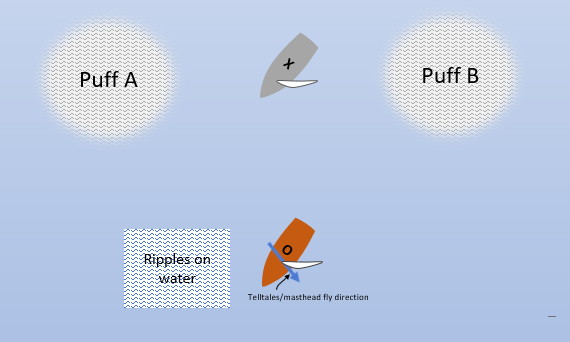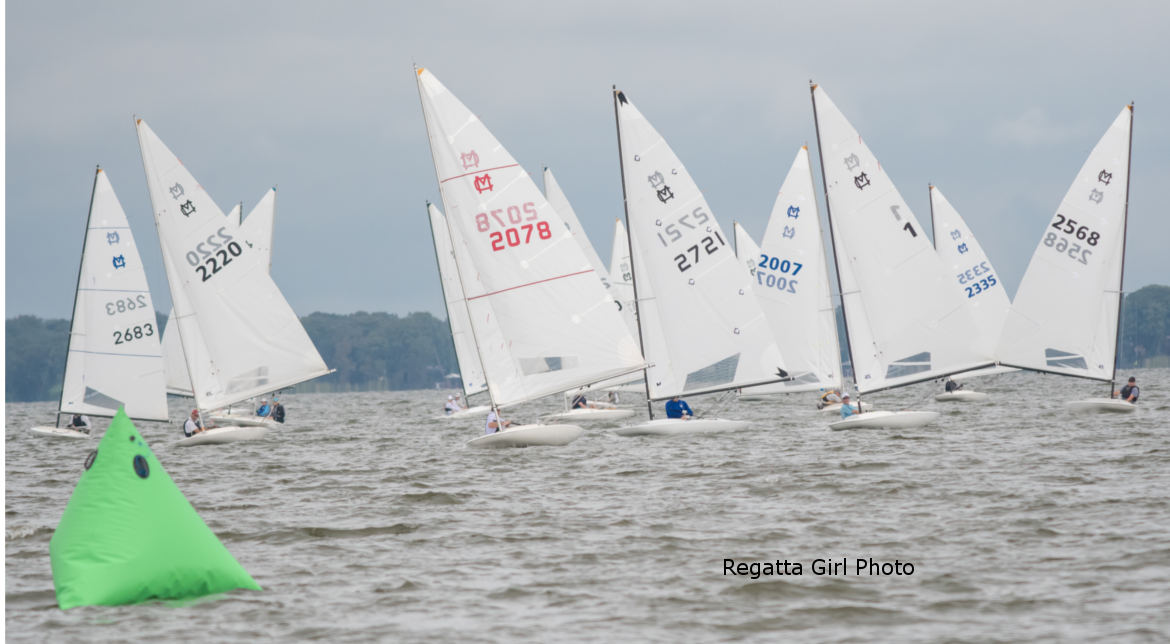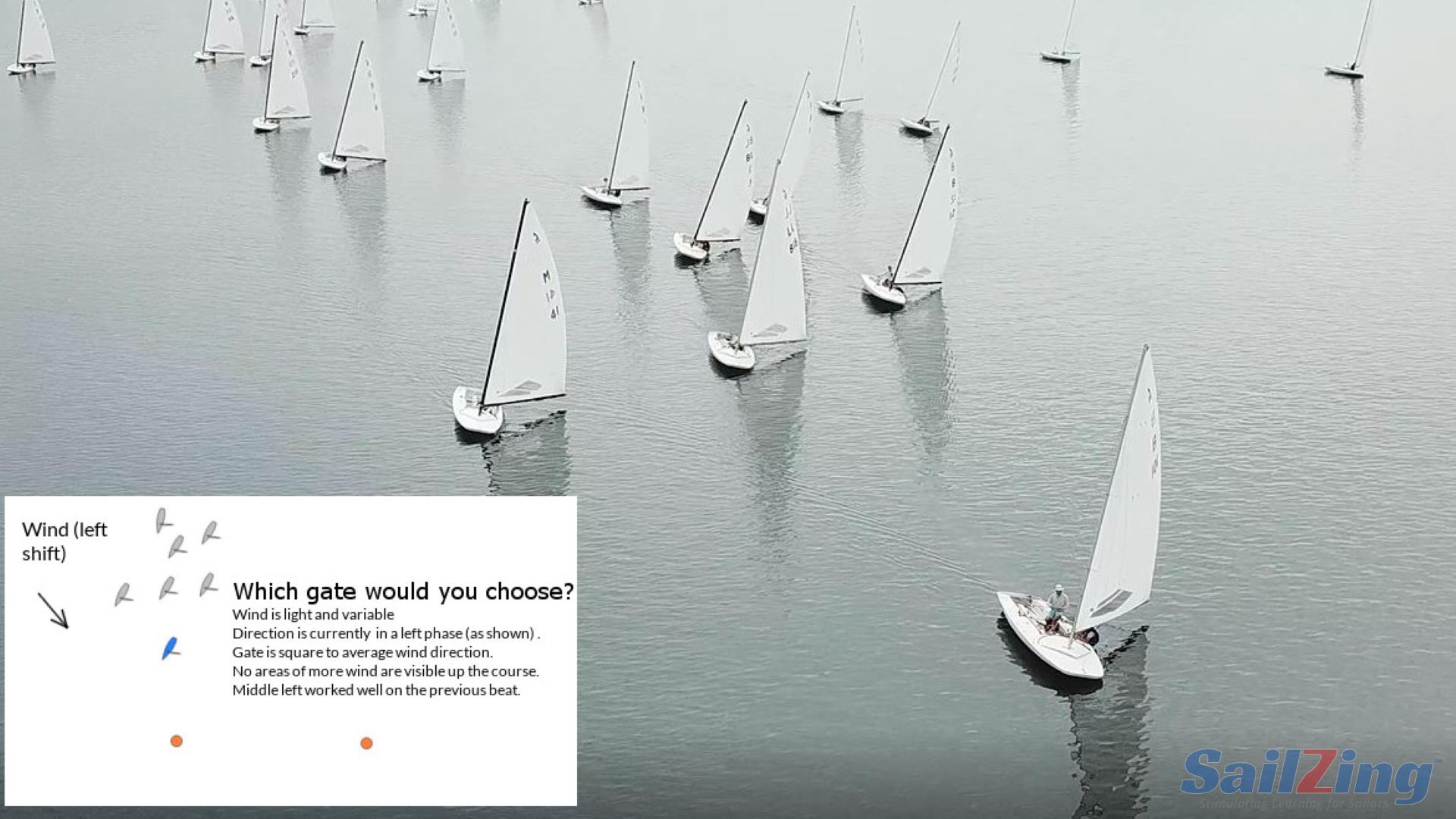Dave Dellenbaugh’s Speed and Smarts, Issue 130 (May/June 2014) has a very informative diagram showing how to use apparent wind clues to sail faster and smarter downwind. We present Dave’s diagram as a quiz, with his answers reprinted in the links below (used with permission).
Apparent Wind Clues – Quiz
Boats X and O are sailing downwind at their optimal downwind sailing angles. Note the direction of the masthead fly/telltales on boat O.
Answer the questions using the clues in the diagram below.

1. What is the approximate direction of the true wind?
(click here for answer)
2. Is Boat O in Boat X’s bad air? (click here for answer)
3. Will Boat O intercept Puff A? (Assume Puff A is moving down the course in the direction of the true wind.) (click here for answer)
4. If Boat O gybes and sails her optimal downwind angle on port, draw a line indicating her approximate heading. (click here for answer)
5. If boat O gybes and sails her optimal angle on port, will she intercept Puff B? (Assume Puff B is moving down the course in the direction of the true wind.) (click here for answer)
6. Draw a line indicating O’s current “ladder rung.”
(click here for answer)
7. How can O use her apparent wind to determine when she reaches the layline for the leeward mark? (The layline is the line that allows her to sail directly to the mark at her optimal sailing angle.) (click here for answer)
Key Principles for Using Apparent Wind
Apparent wind direction is indicated by your telltales/masthead fly
The telltales and masthead fly respond to apparent wind, which is the combination of the true wind and the wind created by the boat’s motion. For more on this topic, see our post Understanding Apparent Wind: Visual Resources.
Use the apparent wind direction to see what’s coming
The apparent wind is the “real” wind you are sailing in. When you look upwind to see what’s coming, look in the direction of the apparent wind.
- If an upwind boat’s sail plan is in the direction of your apparent wind, you are in that boat’s bad air, unless you are more than 5-10 boat lengths ahead.
- If a puff or lull is moving toward you from the apparent wind direction, you will likely intercept it.
Project your apparent wind direction to look ahead
When sailing downwind, projecting the direction of your apparent wind forward gives you strategy clues.
- When your apparent wind points to boats ahead, you are giving them bad air and slowing them down. Use this to attack boats ahead.
- Your projected apparent wind shows your new heading if you gybe and sail the same relative angle to the true wind. Use this to determine when to gybe to sail toward a given point, such as the mark.
Look at your wake to find puffs to intercept when gybing
Strangely enough, your wake points in the direction of the apparent wind you would see if you gybe and sail at the same relative angle to the true wind. Study Dellenbaugh’s diagram, item 5, to see this. Use this to see puffs you might intercept by gybing.
The true wind determines who’s ahead
Just like in upwind sailing, you can tell who’s ahead on a downwind leg using the concept of ladder rungs. Ladder rungs are imaginary lines perpendicular to the true wind direction. On the downwind leg, boats on lower ladder rungs (further downwind to the true wind) are ahead.
Use a line parallel to the ripples on the water determine the ladder rung you’re on compared to boats around you. According to Dellenbaugh, you may also be able to use a line parallel to your boom, since many sailors trim their mainsail perpendicular to the true wind.
For more, see our post Ladder Rungs: Understand the Race Course.with a Visual Approach




